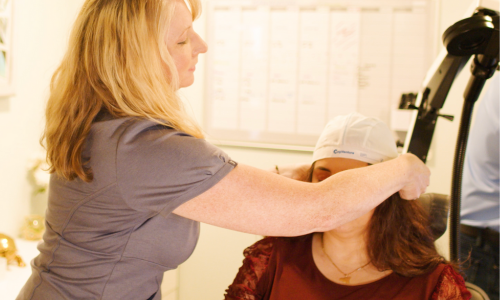When most people think of Seasonal Affective Disorder (SAD), they associate it with winter—the dark, cold months that seem to stretch on forever. However, while winter SAD is more common, seasonal depression can also occur in the spring and summer. If you’ve ever found yourself feeling more anxious, irritable, or depressed as the flowers bloom and the days grow longer, you’re not alone.
Understanding Spring Depression
Spring depression, sometimes called Reverse Seasonal Affective Disorder (Reverse SAD), is a form of depression that occurs as the seasons shift to warmer months. While winter SAD is typically linked to a lack of sunlight and a drop in serotonin levels, spring depression can have different causes, including:
- Disruptions to Circadian Rhythms – Longer daylight hours can alter sleep patterns, leading to poor sleep quality and mood disturbances.
- Hormonal Changes – The increase in sunlight can affect melatonin and serotonin levels, sometimes leading to mood instability.
- Life Changes – Spring often brings transitions, such as school endings, increased social expectations, or significant life events that can contribute to stress and anxiety.
Recognizing the Signs of Spring Depression
While symptoms vary from person to person, common signs of spring-related SAD include:
- Increased anxiety and restlessness
- Irritability or mood swings
- A sense of sadness, hopelessness, or despair
Common Misconceptions About SAD
A widespread myth about Seasonal Affective Disorder is that it only occurs in the winter. In reality, SAD can happen during any seasonal transition. While winter SAD is often tied to a lack of sunlight and increased melatonin production, spring and summer SAD may be linked to excessive daylight exposure, heat sensitivity, and environmental changes. Recognizing that SAD isn’t exclusive to winter is the first step in getting the right support and treatment.
Coping Strategies for Spring Depression

If you experience symptoms of SAD in the spring, there are several ways to manage your mental health:
- Stick to a Routine – Maintaining a consistent sleep and meal schedule can help regulate mood and energy levels.
- Exercise Regularly – Physical activity releases endorphins, which can boost mood and reduce symptoms of depression.
- Practice Mindfulness and Stress Reduction – Techniques like meditation, deep breathing, spending time outdoors, and getting enough vitamin D can help reduce stress and improve overall well-being.
- Seek Support – Talking to a doctor or therapist can provide valuable coping strategies.

How Transcranial Magnetic Stimulation (TMS) Can Help
For those who struggle with treatment-resistant depression, including SAD, Transcranial Magnetic Stimulation (TMS) offers a non-invasive, FDA-approved treatment option. TMS uses targeted magnetic pulses to stimulate brain regions associated with mood regulation, helping to reduce symptoms of depression and anxiety. Unlike medications, TMS has minimal side effects and is a well-tolerated option for those who have not found relief with traditional therapies.

You Are Not Alone
If you’re feeling depressed in the spring, it’s important to acknowledge your emotions and seek support. Whether through lifestyle changes, therapy, or innovative treatments like TMS, there are ways to manage seasonal depression and improve your quality of life. If you’d like to learn more about how TMS can help with seasonal affective disorder and other forms of depression, take our self-assessment quiz and contact The Center for Brain Stimulation today.

